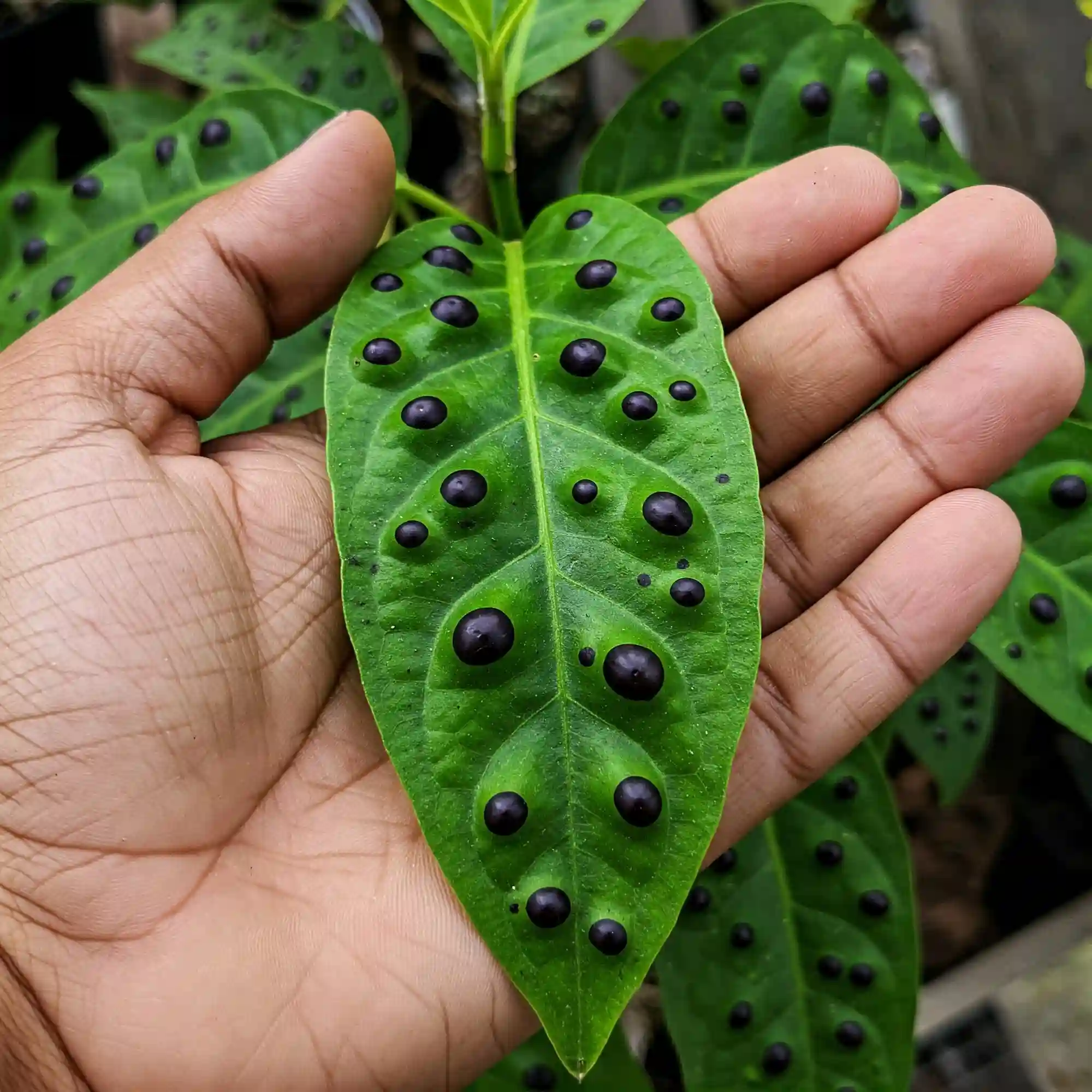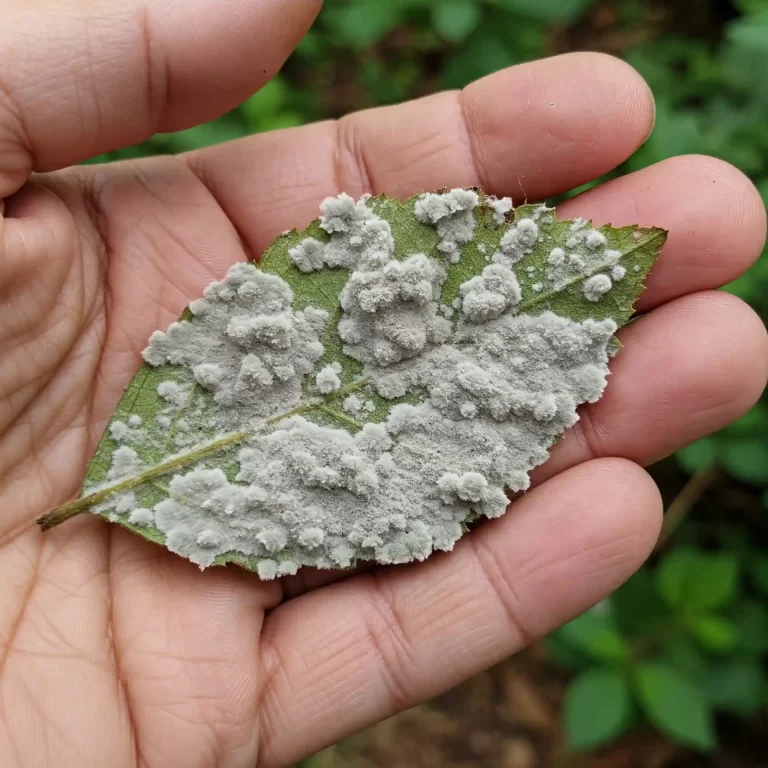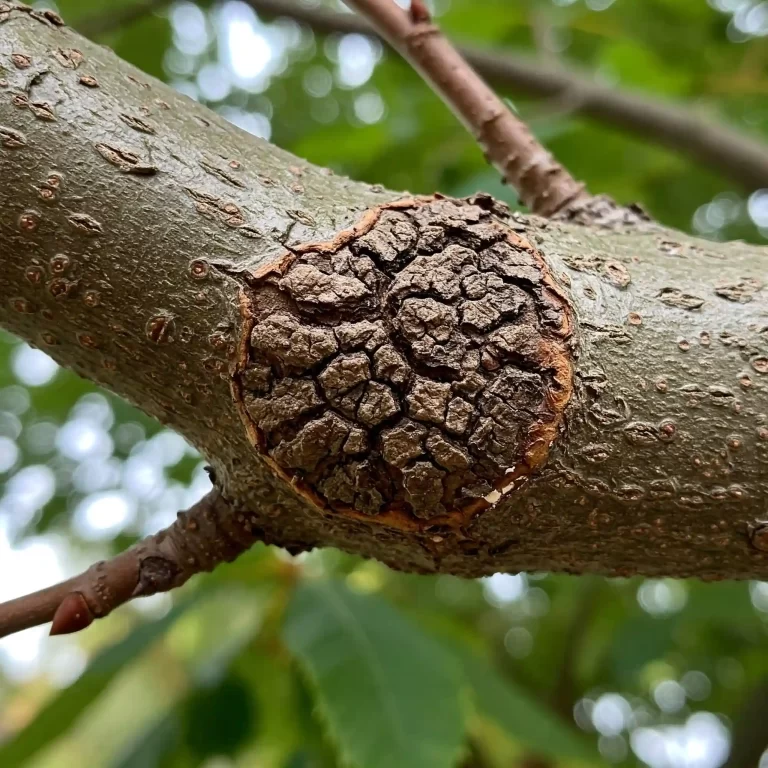Have you ever walked through your garden, expecting a vibrant display of healthy plants, only to discover those unsettling circular spots marring the leaves? The frustration is real, isn’t it? You’ve nurtured these plants, provided the right sunlight, water, and nutrients, yet these spots appear, throwing a wrench into your gardening efforts. It’s not just the aesthetic damage; it’s the nagging worry about the health of your beloved plants. I understand that feeling of helplessness. But don’t worry, you’re not alone, and I’m here to guide you through this. Together, we’ll decode the mystery of these spots, understand their causes, and implement effective solutions to restore your garden’s beauty and health.
Common Causes of Circular Spots on Plants
Circular spots on your plants can be a frustrating sight, leaving you wondering what’s causing the damage and how to fix it. Fear not, fellow gardeners! In this comprehensive guide, we’ll delve into the world of circular spots, exploring their common causes, effective treatment methods, and preventive measures to keep your plants thriving.
Fungal Diseases
Fungal diseases are a common culprit. You might encounter:
- Leaf Spot: This is a broad term, but often it’s characterized by small, round spots that vary in color. For instance, black circular patches might indicate a severe fungal infection.
- Powdery Mildew: While not always perfectly circular, the white, powdery patches can appear in roundish formations, particularly on leaves and stems.
- Rust: This disease produces orange or rust-colored circular pustules, often on the undersides of leaves.
Fungal diseases thrive in humid conditions. If you notice these spots, consider whether you’ve had prolonged wet weather or if your plants are overcrowded, limiting air circulation.
Pests and Insects
Insects can also leave their mark. Certain pests create circular marks on leaves as they feed or lay eggs.
- Aphids: These tiny insects can cause discolored spots, sometimes in circular patterns, as they suck sap from leaves.
- Mites: These microscopic pests can create stippled or speckled patterns that might appear as tiny, numerous circular spots.
- Beetles: Some beetles, such as Japanese beetles, can chew on leaves, creating small, irregular holes.
- Insect Eggs: Some insects, such as leafhoppers, lay eggs on the undersides of leaves, which can appear as small, circular spots.
It’s crucial to inspect your plants closely for signs of these pests. Look for webbing, insect droppings, or the insects themselves.
Environmental Factors
Sometimes, the environment itself can cause circular spots.
- Sun Damage: Intense sunlight can scorch leaves, leading to circular brown or yellow spots.
- Overwatering: Excess moisture can lead to fungal growth, resulting in spots.
- Nutrient Deficiencies: A lack of essential nutrients can manifest as discoloration, sometimes in circular patterns. For example, a potassium deficiency might cause yellowing around the edges of leaves.
Soil-Borne Pathogens
The soil itself can harbor pathogens that lead to plant leaf discoloration. These pathogens, such as certain fungi or bacteria, can attack the roots and spread to the leaves, causing spots.
Common Causes and Symptoms of Circular Spots
| Cause | Symptoms |
| Fungal Diseases | Circular spots, varying in color, powdery patches, rust-colored pustules |
| Pests and Insects | Discolored spots, stippled patterns, chewed holes |
| Environmental Factors | Brown or yellow spots, fungal growth, discoloration |
| Soil-Borne Pathogens | Leaf discoloration, wilting, stunted growth |
Case Study: The Tomato Leaf Spot Mystery
I once had a client, let’s call her Sarah, who was distraught over the appearance of large, yellow circular spots on her tomato plants. She had tried various remedies, but the spots persisted. After a thorough examination, I discovered it was a fungal disease, Septoria leaf spot. We adjusted her watering habits, applied a copper-based fungicide, and ensured better air circulation. Within weeks, Sarah’s tomato plants were back to their healthy, vibrant selves.
Remember, identifying the cause of the circular spots is the first step towards finding the right solution. By carefully observing your plants and considering the factors mentioned above, you can begin to unravel the mystery and take action to protect your garden.
Identifying the Culprit: A Step-by-Step Guide
Accurately identifying the cause of circular spots on your plants is crucial for effective treatment. Here’s a step-by-step guide to help you pinpoint the culprit:
1. Observe the Spots: Carefully examine the size, color, and location of the spots. Are they small and numerous, or large and isolated? Are they brown, black, yellow, or another color? Are they located on the upper or lower surface of the leaves?
2. Check for Additional Symptoms: Look for other signs of distress, such as leaf discoloration, wilting, stunted growth, or the presence of insects.
3. Examine the Undersides of Leaves: Use a magnifying glass to inspect the undersides of leaves for signs of pests, such as aphids, mites, or insect eggs. You may also be able to see fungal spores or other microscopic structures.
4. Assess Soil Conditions: Check the moisture level of the soil. Is it too wet or too dry? Consider testing the soil pH to determine if nutrient deficiencies are contributing to the problem.
5. Consult a Plant Disease Guide or Expert: If you’re still unsure about the cause of the spots, consult a plant disease guide or contact a local gardening expert or your county extension office for assistance.
By carefully observing your plants and following these steps, you can gain valuable insights into the cause of the circular spots and take appropriate action.
Remember, early detection is key to successful treatment. The sooner you identify the problem, the easier it will be to address and prevent further damage to your plants.
Effective Treatment Strategies for Circular Spots on Plants
Once you’ve identified the cause of the circular spots, you can implement appropriate treatment strategies. Here are some effective approaches:
Natural Remedies
- Neem Oil: Neem oil is a natural insecticide and fungicide that can be effective against a variety of pests and diseases. Dilute neem oil according to the product instructions and apply it to affected plants using a spray bottle.
- Fungicides: There are various organic fungicides available, such as those containing copper or sulfur. Follow the product instructions carefully when applying fungicides.
- Homemade Sprays: Some homemade sprays, such as a solution of baking soda and water, can be effective against certain fungal diseases. However, it’s important to test these remedies on a small area of the plant first to ensure they don’t cause any damage.
Chemical Treatments
- Insecticides: If pests are causing the circular spots, you may need to use insecticides. Choose insecticides that are specific to the type of pest you’re dealing with.
- Fungicides: For severe fungal infections, chemical fungicides may be necessary. However, it’s important to use these products with caution and follow the label instructions carefully.
Cultural Practices
- Pruning and Sanitation: Remove and destroy any infected plant parts, such as leaves or stems. This will help prevent the spread of disease.
- Adjust Watering Practices: Ensure that your plants are receiving adequate water, but avoid overwatering. Allow the soil to dry out slightly between waterings.
- Improve Soil Drainage: If your soil is poorly drained, excess water can lead to root rot and other fungal diseases. Improve drainage by amending the soil with organic matter or installing drainage systems.
Remember, it’s crucial to choose the appropriate treatment method based on the specific cause of the circular spots. For example, if the spots are caused by a fungal disease, using a fungicide would be the most effective approach. If pests are the culprit, an insecticide would be necessary.
Prevention is Key: Tips for Keeping Your Plants Spot-Free
The best way to deal with circular spots on your plants is to prevent them from occurring in the first place. Here are some preventive measures you can take:
- Choose Disease-Resistant Varieties: Select plant varieties that are known to be resistant to common diseases in your area. When purchasing plants, look for labels indicating disease resistance.
- Maintain Proper Plant Spacing: Ensure that your plants have adequate space to grow and circulate air. This will help to reduce humidity and prevent the spread of fungal diseases. Avoid overcrowding, which can create a damp environment that encourages fungal growth.
- Water Properly: Water your plants deeply and infrequently, allowing the soil to dry out slightly between waterings. Avoid overhead watering, which can spread fungal spores. Water the base of the plants instead.
- Improve Soil Health: Maintain healthy soil by adding organic matter, such as compost, to improve drainage and aeration. Healthy soil promotes strong plant growth and can help them better resist diseases.
- Monitor Your Plants Regularly: Inspect your plants regularly for signs of disease or pests. Early detection and prompt action are key to minimizing damage. Regularly checking your plants can help you identify problems early on and take steps to address them before they become severe.
- Practice Good Sanitation: Remove and destroy any infected plant material promptly. This will help prevent the spread of diseases to other plants in your garden. Keep your gardening tools clean and disinfected between uses.
By implementing these preventive measures, you can create a healthy environment for your plants and minimize the risk of encountering circular spots. Remember, prevention is always better than cure when it comes to plant health.
Frequently Asked Questions About Circular Spots on Plants
In this section, we’ll address some frequently asked questions about circular spots on plants to help you further understand and manage this common gardening challenge.
What causes small, brown circular spots on my rose leaves?
Small, brown circular spots on rose leaves can be caused by a variety of factors, including fungal diseases like black spot, insect damage from aphids or mites, or even nutrient deficiencies. It’s important to carefully examine the spots and look for additional symptoms to determine the exact cause.
How can I treat large, yellow circular spots on my tomato plants?
Large, yellow circular spots on tomato plants are often a symptom of Septoria leaf spot. To treat this disease, you can:
- Remove and destroy infected leaves.
- Apply a fungicide, such as copper spray or neem oil, according to the product instructions.
- Improve air circulation around your tomato plants by pruning and staking them.
Are circular spots on my lawn grass a cause for concern?
Yes, circular spots on your lawn grass can be a sign of various fungal diseases, such as dollar spot or ring spot. These diseases can weaken your lawn and make it more susceptible to other problems. If you notice circular spots on your lawn, it’s important to take action to address the issue.
Can I prevent circular spots on my plants by using organic fertilizers?
Using organic fertilizers can help to improve soil health and promote strong plant growth, which can make them more resistant to diseases. However, organic fertilizers alone may not be enough to prevent all types of circular spots. It’s important to use a combination of preventive measures, including choosing disease-resistant varieties, maintaining proper plant spacing, and watering appropriately.
What is the best way to dispose of plant leaves with circular spots?
It’s best to dispose of infected plant leaves in the trash to prevent the spread of diseases. Do not compost infected plant material, as this can spread diseases to other plants in your garden.
Remember, early detection and prompt action are key to managing circular spots on your plants. By understanding the causes, implementing effective treatment strategies, and taking preventive measures, you can keep your plants healthy and thriving.
If you have any further questions or concerns, feel free to leave a comment below or contact your local gardening expert for assistance.
Conclusion
By understanding the common causes of circular spots on your plants and implementing effective treatment and prevention strategies, you can ensure a healthy and vibrant garden. Remember, early detection and prompt action are key to minimizing damage and keeping your plants thriving.




